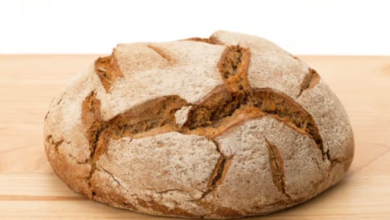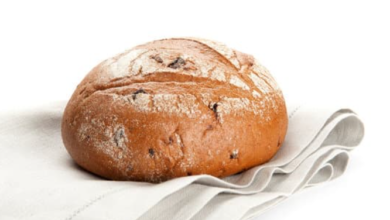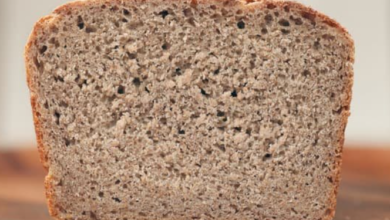Why is Rye Bread Darker Than Other Breads?

What To Know
- The higher the temperature and longer the baking time, the more pronounced the Maillard reaction and the darker the bread becomes.
- Light rye bread contains a lower percentage of rye flour and is lighter in color, while dark rye bread uses a higher percentage and is significantly darker.
- From the rich color imparted by rye flour to the complex flavors developed through fermentation and the Maillard reaction, rye bread stands as a culinary masterpiece that delights the senses and nourishes the body.
Rye bread stands out in the world of baked goods with its distinctive dark hue. Unlike its lighter counterparts, this bread captivates with its rich color and earthy flavor. But what causes rye bread to be so dark? Delving into the depths of this culinary enigma, we embark on a journey to uncover the secrets behind its unique appearance.
The Power of Rye Flour
At the heart of rye bread‘s darkness lies the flour used to make it. Rye flour, obtained from grinding whole rye grains, is significantly darker than wheat flour due to its higher concentration of bran and germ. These components contain pigments and minerals that impart a deep brown hue to the flour, and consequently, to the bread made from it.
Fermentation and Maillard Reaction
The fermentation process plays a crucial role in the darkening of rye bread. During fermentation, yeast consumes the sugars present in the flour, producing carbon dioxide and alcohol. The carbon dioxide causes the dough to rise, while the alcohol evaporates during baking, contributing to the bread’s flavor and texture.
Simultaneously, the Maillard reaction occurs, a chemical reaction between amino acids and reducing sugars that produces melanoidins, brown pigments responsible for the bread’s crust color. The higher the temperature and longer the baking time, the more pronounced the Maillard reaction and the darker the bread becomes.
Caraway Seeds and Other Additives
Caraway seeds, a common ingredient in rye bread, also contribute to its dark color. These seeds contain essential oils and pigments that enhance the bread’s flavor and give it a slightly darker appearance. Other additives, such as molasses or cocoa powder, can be added to further darken the bread’s color.
Hydration Level and Baking Time
The hydration level of the dough also influences the darkness of rye bread. Higher hydration levels result in a darker bread, as the water interacts with the flour’s pigments and promotes the Maillard reaction. Additionally, the baking time affects the color; longer baking times allow for more extensive caramelization and a darker crust.
Types of Rye Bread and Their Darkness
Different types of rye bread vary in their darkness depending on the proportions of rye flour and other ingredients used. Light rye bread contains a lower percentage of rye flour and is lighter in color, while dark rye bread uses a higher percentage and is significantly darker. Pumpernickel bread, considered the darkest type, is made almost exclusively with rye flour and has a deep, rich color.
Health Benefits of Dark Rye Bread
Despite its dark appearance, rye bread offers numerous health benefits. It is a good source of fiber, which supports digestive health and helps regulate blood sugar levels. Rye bread is also rich in antioxidants, vitamins, and minerals, making it a nutritious choice.
Summary: Embracing the Darkness
The darkness of rye bread is not a flaw but rather a testament to its unique flavor and nutritional value. From the rich color imparted by rye flour to the complex flavors developed through fermentation and the Maillard reaction, rye bread stands as a culinary masterpiece that delights the senses and nourishes the body.
Frequently Discussed Topics
1. Why is my rye bread not dark enough?
- Check the type of rye flour used; dark rye flour will produce a darker bread.
- Increase the hydration level of the dough.
- Extend the baking time to allow for more caramelization.
2. Can I use wheat flour to make rye bread?
- Yes, but the bread will not be as dark as if you used rye flour.
3. What is the best way to store rye bread?
- Store rye bread in an airtight container at room temperature for up to 3 days. For longer storage, freeze the bread in airtight bags.
4. Is rye bread healthy?
- Yes, rye bread is a good source of fiber, vitamins, minerals, and antioxidants.
5. What can I add to rye bread to make it more flavorful?
- Try adding caraway seeds, molasses, or cocoa powder to enhance the flavor.



